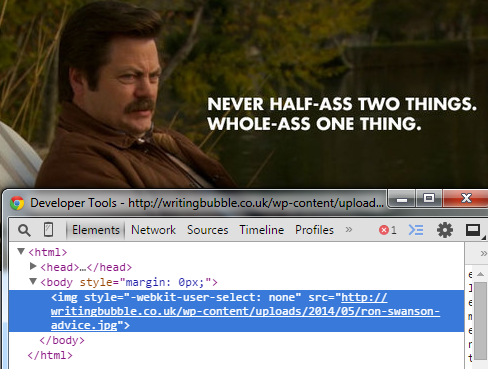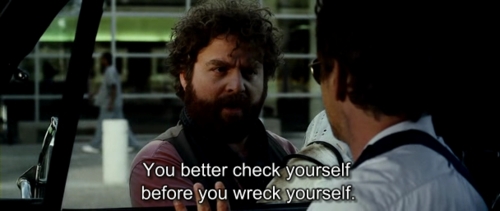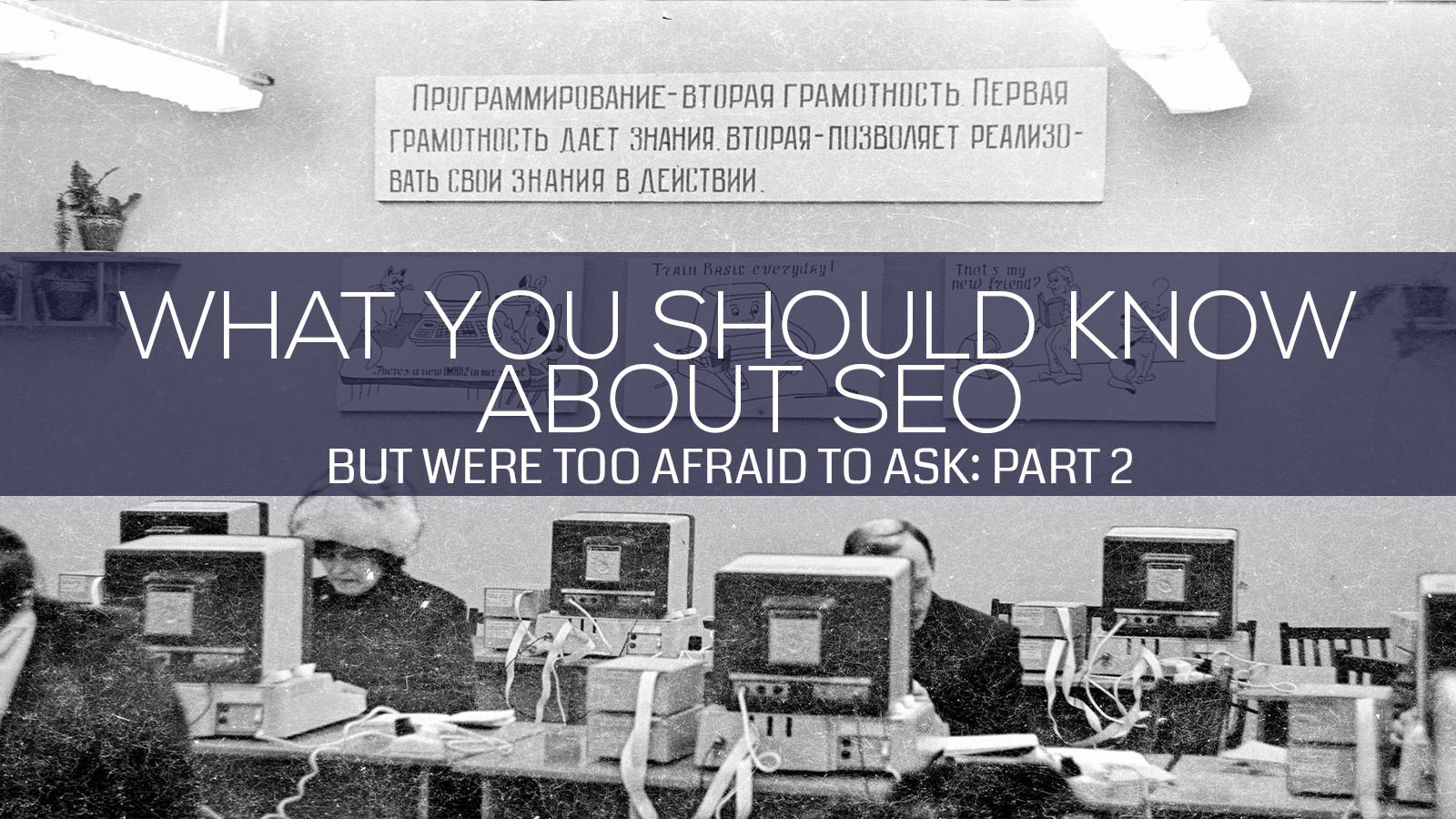So earlier this morning I told you 5 key things you should know about SEO but were too afraid to ask. Not knowing the general in’s and outs of structuring a site in such a way to make it as user friendly as possible doesn’t mean you have to be an internet genius, you just have to know what to look at. You can read the first half right here to get up to date. When you’ve done that, just dive right back in here and lets get on with the show.
Here are points 6 to 10 of what you should know.

6.Content
Having a sleek and minimalistic site is nice, but it will do bugger all good if a potential customer has no idea what is going on. Ever find yourself in a restaurant, look at the menu and see a word you’ve never heard before in your life (like a velouté of shaved barrmundi on diced celeriac) only to have the waiter explain just what it is. If your site looks nice but doesn’t efficiently describe the product or service you’re providing, customers will turn away and just go for the chicken and chips that do the job. Search engines also look at a factor called Text to HTML ratio where your website is viewed as blank page and if it doesn’t have enough good words written on it, it won’t be seen as relevant.

7.Alt-Tags
Your site has hundreds of photos and different images all waiting for someone to lay eyes on them. But no one will ever find them if they aren’t labelled properly. An alt-tag is simply an attribute you give to an image so that a computer will know what it is. We’ve all taken photos from a camera and put them on a computer and seen that every image will have a title like 0066463434234.jpeg. This is how an alt tag would appear to a search engine. Now the title of your image might say ‘Size 7 Nikes’ but the alt-tag that gives its image the right attributes also needs to have an individual alt-tag that helps label it.
It plays a massive part in image searches if you run an online shop as it helps something that cannot actually see an image (i.e. a search engine) know what the image is. Look at the image above and the alt-text it had. Now right click the image, click Inspect element and see how I’ve put in a relevant alt tag from what the image previously had. Its such a little thing but it can bring about so much positive change.

8.Site Speed
If your site isn’t going as fast it possibly can then you’re in just as much trouble as Keanu Reeves on a bus. The spinning circle of doom will drive anyone away from your site. A person will only wait so long, as in less than 10 seconds, for a site to fully load before calling itquits. If it doesn’t and they can’t see what they want they’ll go elsewhere. It’s like waiting in the queue at a coffee shop. If it isn’t shifting and you aren’t getting any closer to having your coffee, you’re going to leave and head elsewhere. You can check your site speed on Google Pagespeed Insight. It gives a very concise way of highlighting what areas you can improve speed in.
9.Social Buttons/Blog
Sharing is caring. You should always make sure you have every possible social profile your company has linked on site. Your Facebook/Twitter/Linkedin/Pinterest etc. accounts can make up a big chunk of referral traffic.We have share buttons at the bottom of every blog post, our tweets on the right, and our profiles linked at the bottom of the page too. If you have a site with hundreds of products, a like or share button on each one is viewed a signal that the content being provided is relevant as someone else is highlighting that page. The same goes for blogs. If your site has a blog, its an invaluable resource of content sitting there waiting to be shared. And writing blog posts doesn’t have to be a repetitive mission statement. A simple blog post with a few photos, an update of what’s going on in your company or what changes you’ve made to the site will highlight potential new customers in your direction.

10.Check Yourself (before you wreck yourself)
This last point is probably the most important. Building a website and doing the previous 9 steps is great, but just leaving your site to sit there like a backyard barbecue in the rain will end up with you having a site which just won’t work as time as goes by. You need to keep tabs on your site more than once in a blue moon. Never think of a website as a product but an ongoing project that will always need a few tweaks here or there. You might have to update some product details after a few months, change your contact details (you’d be amazed how many sites forget to do this) or just update a few plugins to make the site run faster. You don’t have to over analyse every aspect, just go in for a check up every so often.
There you have it. 10 very important factors to do with any website and SEO. There are lots more I could’ve talked about, but its never good to overload on so much information at once. I suggest you take a little time to go over the major points of each part, familiarise yourself with what the key terms are and you’ll be free of feeling any embarrassment or confusion towards what you should know about SEO but were too afraid to ask.
If you’d like to know how we can help any site have better SEO, just scroll down to our contact box and drop us a line.

